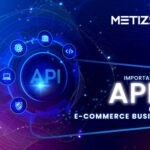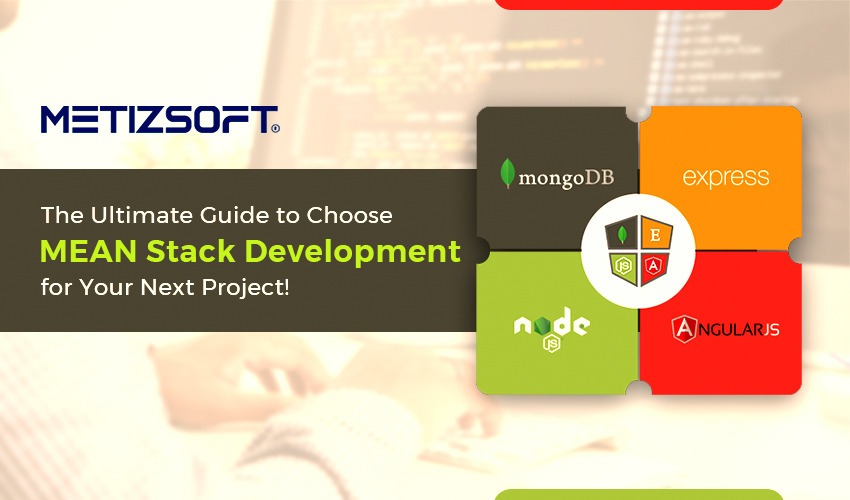
The advancement in programming languages and their functionalities leads the mobile app development process to the next level. To match that extended level of digitalization, developers need to adhere to the full-stack app development process by adopting a standardized and compatible software stack.
It is indeed a hassle to stick behind a specific tool when you have multiple options available with updated versions.
Still, suppose you plan to build a robust web and mobile app coped with multi functionalities that will run seamlessly considering any device and platform.
In that case, we suggest you adopt the MEAN stack for your app development process out of many.
However, you might come across software stacks like LAMP, Ruby on Rails, and many others dominating the software and mobile app development field.
But, here, we will discuss the MEAN stack, its components, and its architecture. How can developers benefit from using its combination to build robust web and mobile apps for better and faster results?
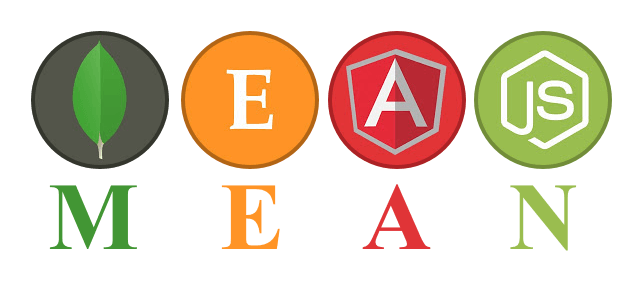
Table of Contents
What is MEAN?
Modern web developers are well familiar with the acronym of MEAN, which expands to M = MongoDB, E = ExpressJs, A = AngularJS, and N = NodeJs. One significant commonality these four components share is Javascript.
By using the MEAN stack components, developers are able to design and develop user-friendly, dynamic web and mobile applications relevant to business modules.
The four stacks refer to:
MongoDB – Database document
ExpressJs – Web framework of NodeJs
AngularJs – Javascript framework (Client-side)
NodeJs – Premier web server of Javascript
Since the entire code base of the MEAN stack is based on Javascript, the execution process got accessible from the client to the server side.
Roles & Responsibilities of The Components

MongoDB
MongoDB is an open-source, cross-platform database designed in the C++ programming language. The key responsibility it facilitates in MongoDB is storing large files and data in the binary JSON format.
MongoDB also allows you to add and manage different fields to the database without reloading the entire table. This way, MongoDB adds more scalability to MEAN.

ExpressJS
ExpressJs is a server-side framework that works as a medium and manages the interaction between the front end and the back end. It ensures a seamless data transfer process from the server side to the end user and vice-versa.
This lightweight server-side framework supports numerous modules and templates that allow developers to work efficiently, saving time and money.

AngularJs
AngularJs is developed and maintained by Google, and is an open-source front-end development framework. In the MEAN stack, the ultimate responsibility of AngularJs is in developing the user interface of the application.
The prime goal of using AngularJs is to showcase MVC (Model View Controller) architecture in a browser-based application.
AngularJs is cross-platform compatible and comes with various templates and modules that ideally work in front-end development.
Developers can use HTML as their template language while working with AngularJs, making it easy to cope with native components.
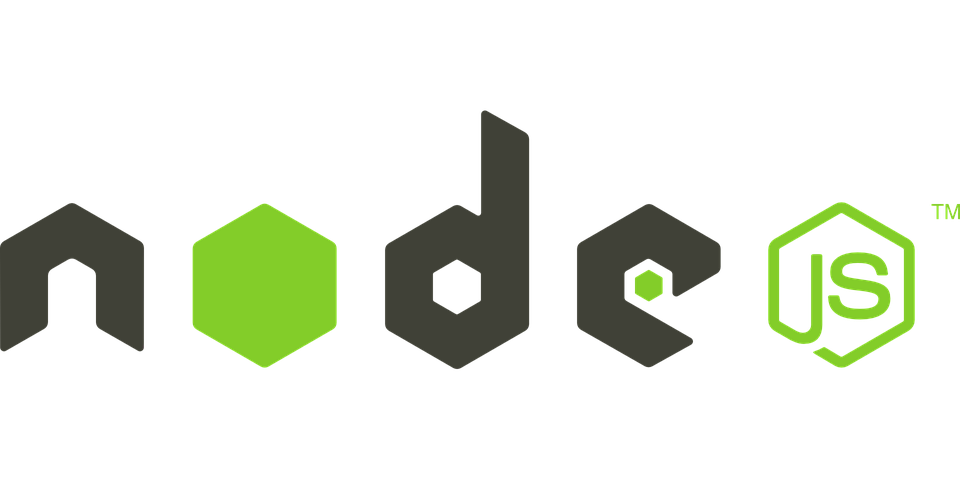
NodeJs
NodeJs comes with an in-built web server, making it easier for developers to deploy the MongoDB database into the cloud server. NodeJs works as the backbone of MongoDB!
It is well compatible with ExpressJs and AngularJs and facilitates fast data serving from the server side to the client side.
NodeJs is lightweight and comes with modern components that allow data-driven and real-time applications to run smoothly on macOS, Windows, and Linux.
The Architecture Of The MEAN Stack
As mentioned, we all know that AngularJs is a client-side front-end development framework we use while working on MEAN; it automatically gets proposed by AngularJs when the client makes any request.

Then the request travels to NodeJs. This is phase two, where the client’s request enters the server side for further processing.
After phase two, the client’s request travel to ExpressJs; phase three works as a medium from the client side to the database.
And then the final stage comes, when MongoDB receives the client’s request through ExpressJs and retrieves back with a solution completing the overall procedure.
Likewise, the reverse procedure happens here as MongoDB reaches out ExpressJs with a response, ExpressJs revert back to NodeJs and NodeJs then reach out AngularJs.
Advantages of MEAN Stack
MEAN apps are specifically designed to refer to real-time on-demand and single-page web applications. Such web apps are compatible with the cloud and run smoothly cross-platform.
Considering the agility and responsive nature of MEAN stack apps, MEAN stack app development companies like Metizsoft Solutions are exploring new ways to develop scalable and reliable MEAN applications.
With an experienced team behind all the on-demand MEAN stack app development, the company delivers exceptional app development solutions to its clients.
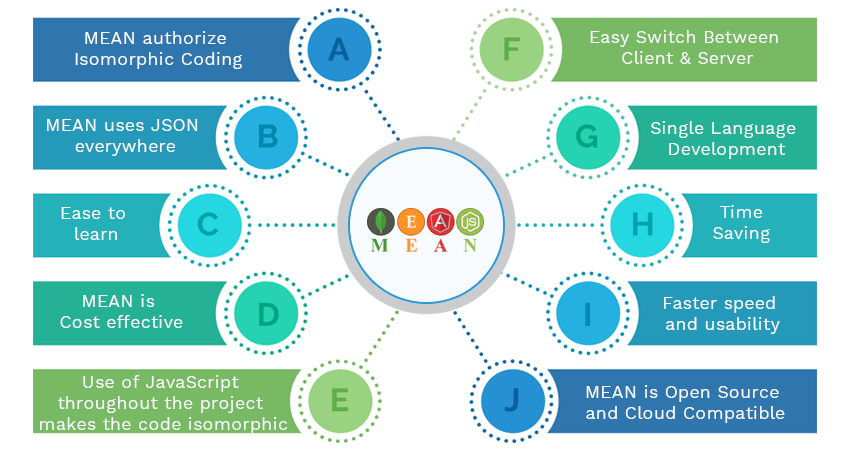
Below enlisted some advantages of MEAN for its humongous adaptability amongst app development companies
- The flexibility MongoDB and NodeJs add to the database allows developers to develop, run, and test applications on cloud servers without hassle.
- Its compatibility with Javascript makes it simple for users and developers to use and develop applications efficiently.
- MEAN stack is cost-effect as almost all its components are open-source and committed to a large community where they get timely updates and support over complex methods quickly and with no charge.
- Due to NodeJs’s non-blocking architecture, MEAN stack development becomes high-speed and has a reusability option.
- MEAN stack comes under an easy learning curve as each component is open-source and has a large community base.
- NodeJs comes with a vast library that offers a wide variety of Javascript modules, making it easy for developers to grab the components’ information while working on the app development.
- With JSON coped with MongoDB, working on the backend side is seamless. MEAN uses JSON on almost every field to store its data, facilitating the data rewriting process without changing the entire table.
- With MEAN, you can easily work on MVC (Model View Controller), which provides the latest user-interface components.
Final Thought
With every robust app, the surge of MEAN stack is emerging as the pick of the development process amongst app development companies globally.
Entrepreneurs are hiring MEAN stack developers to design and develop cutting-edge on-demand applications that will boost their ROI.
Also, coding enthusiasts choose to become MEAN stack developers, keeping in mind the demand and opportunities available in the industries.
So, If you have a good grip on HTML, CSS, Javascript, and database architecture, then aiming to become a MEAN stack developer might be the best option for you.
Rest assured, you will get help from tutorials and Github as all the MEAN components adhere to a large community of developers worldwide.
AboutChetan Sheladiya
Related Posts
Essential Tips and Tricks for UX/UI Design
Imagine you are visiting any random website for the first time as a user and it’ll impress you within 5-10 seconds. How?...
Best Front-End Development Tools, Framework and Libraries to Use in 2021
Front-end development tools are high in demand for the past few years because of their impeccable benefits and features for...
